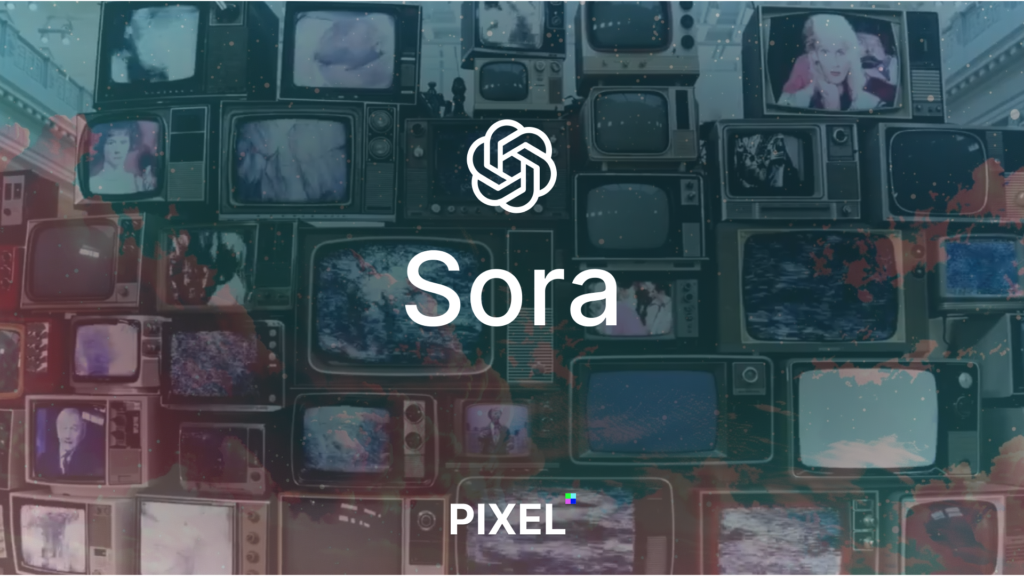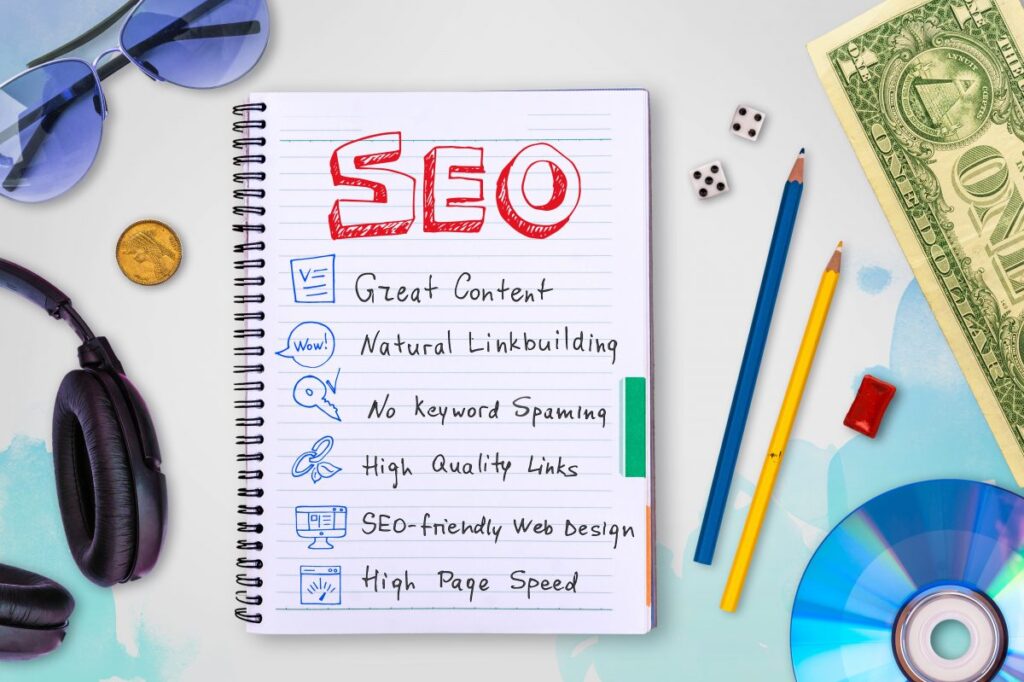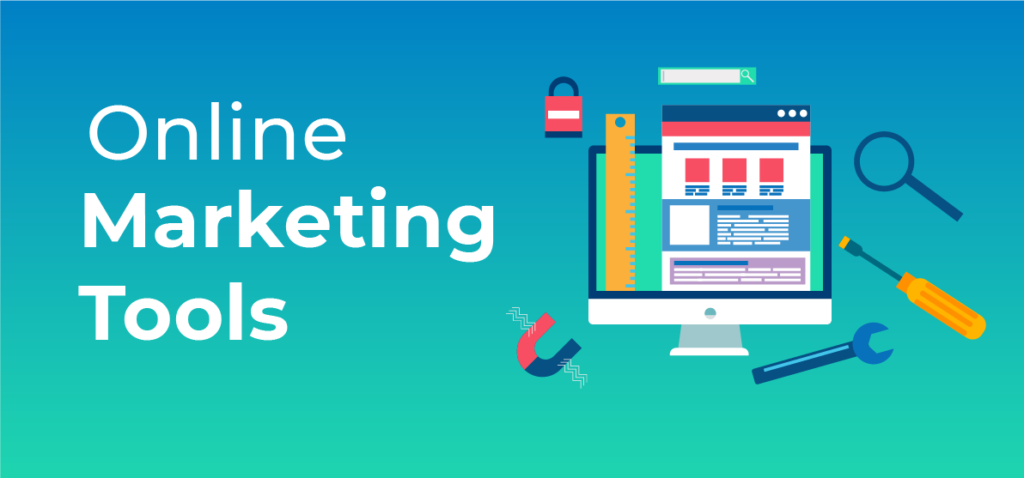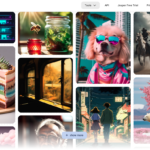The trend is clear; looking at projections of market growth, user demographics, and adoption figures, we can’t ignore generative AI’s incredible traction.
This article will explore 8 powerful facts that underscore why generative AI is poised to revolutionize marketing.
We delve into how these tools can enhance personalization, boost efficiency, and provide competitive edges. While these are exciting times, there is room for caution and tempered expectations.
Table of Contents
Proactive experimentation is a smart way to get acquainted with technology and understand how to leverage it as global momentum to integrate AI in marketing continues to ramp up.
The following facts and insights will provide a starting point for strategic planning and internal buy-in for teams aiming to leverage AI tools for transformative outcomes.
1. The Gen Al market is forecasted to grow from USD 11.3 billion in 2023 to a valuation of USD 76.8 billion by the year 2030
This massive projected growth signals that generative AI will completely transform marketing within this decade. It means these tools that can generate content, images, audio, and more from simple prompts will become mainstream.
The projected generative AI market growth is akin to the explosion of the internet and e-commerce in the late 1990s. For example, between 1997 and 2000, e-commerce revenue grew over 1000% from $2.6 billion to over $27 billion. The 31.5% CAGR for generative AI similarly indicates exponential, transformative growth.
We can also compare it to the rise of social media marketing in the 2000s. In 2004, only 8% of marketers were using social media in campaigns. By 2014, 97% were using social media for marketing. The generative AI hockey stick growth curve is likely to be as disruptive, if not more.
Just as the internet and social media radically transformed marketing strategies, generative AI will necessitate a paradigm shift. It represents a new capability on the scale of those previous digital revolutions.
The figures predict that generative AI will become indispensable for marketing within a few years. Preparing for this profound impact requires recognizing that we are at a historic inflection point. The prudent path is to become an early adopter, like with past marketing innovations. That will enable you to ride the wave instead of being swept away by it.
As a marketing leader, this underscores why you need to start experimenting with generative AI now. Get hands-on to understand its current capabilities and limitations. Identify potential applications to enhance your marketing efforts.
The 31.5% annual growth rate indicates extraordinarily rapid adoption. So within a few years, not leveraging generative AI could put your marketing efforts behind the curve. This projection is a wake-up call to proactively realign strategies and build in-house capabilities.
The demand for marketing talent skilled in generative AI will explode. To stay competitive, you need to become an early adopter. Implementing generative AI strategically now can give your marketing efforts a sustainable competitive advantage as this technology matures.
The rise of generative AI will enable unprecedented levels of personalization in advertising content, allowing marketers to create highly targeted campaigns that can significantly improve user engagement and conversion rates, thus enhancing the overall customer experience (World Bank).
The adoption of generative AI technologies will lead to the automation of various marketing processes, reducing manual effort, increasing operational efficiency, and allowing marketing teams to focus more on strategic and creative tasks, optimizing resources and productivity.
The rapid growth and evolution of generative AI will result in a continuously changing market landscape with new tools, platforms, and services emerging. Early adopters of these AI technologies can gain a competitive advantage by leveraging innovative solutions to acquire and retain customers, staying ahead in the industry.
2. 65% of generative AI users are Millennials or Gen Z, and 72% are employed.
Given that a majority of generative AI users are Millennials or Gen Z, digital marketers and advertisers can tailor their strategies and content to appeal to the preferences and behaviors of these generations. This demographic is known for its tech savvy and value for authentic and personalized interactions, thus necessitating innovative and user-centric approaches in advertising (Salesforce News).
With 72% of generative AI users being employed, it implies that the workforce is increasingly becoming adept at using AI technologies. This can lead to a shift in workplace dynamics, with a growing demand for AI literacy and skills, impacting talent acquisition and development strategies in the marketing and advertising sectors.
The high usage of generative AI among younger, employed generations indicates a market trend toward AI-driven products and services. This can prompt companies in the digital marketing and advertising industry to innovate and integrate AI technologies to meet the evolving needs and expectations of their target audience.
3. Nearly six out of ten global industry decision-makers had already implemented Gen AI for generating product.
The widespread implementation of generative AI by global industry decision-makers implies a significant impact on strategic decision-making processes in organizations. It suggests that companies, especially in the marketing and advertising sectors, are leveraging AI to innovate and optimize product generation and offerings.
With the majority of decision-makers adopting generative AI for product generation, there is a heightened need for companies to differentiate themselves in the market. This could lead to increased competition and the necessity for continuous innovation and enhancement in AI applications to gain a competitive edge.
The adoption of generative AI in product generation can significantly enhance operational efficiency by automating and optimizing various processes. This can lead to reduced costs, increased productivity, and the ability to quickly adapt to market changes and demands.
4. 10% of all data produced by 2025 will be AI generated, up from less than 1% in 2023.
The anticipated increase in data production by generative AI signifies an impending data explosion. For the digital marketing and advertising industry, this means access to a vast amount of data that can be analyzed and leveraged for insights, targeting, and personalization, enabling more informed and effective strategies.
With generative AI contributing to a substantial portion of data, the need for advanced analytics tools and skills will be paramount. Companies will need to invest in analytics capabilities to process, analyze, and derive actionable insights from the voluminous data generated by AI, impacting decision-making and strategy formulation.
The surge in data production due to generative AI necessitates robust data management and security protocols. Organizations will need to address challenges related to data storage, processing, privacy, and security to responsibly and ethically handle the increased data flow and maintain consumer trust.
5. 60% of the data used to develop AI and analytics projects will be generated synthetically by 2024.
The increase in the use of synthetically generated data implies that companies in the digital marketing and advertising industry can develop more robust and sophisticated AI models. This synthetic data can help in overcoming limitations related to data availability, quality, and diversity, enabling more accurate and reliable analytics and predictions.
The ability to generate synthetic data reduces the dependency on acquiring real-world data, which can be expensive and time-consuming. This can lead to cost efficiencies in developing and training AI models, allowing companies to allocate resources to other strategic areas.
The use of synthetic data can alleviate concerns related to data privacy and security, as it does not involve real user information. However, the generation and usage of synthetic data also necessitate ethical considerations and guidelines to ensure responsible and unbiased applications.
6. 70% of Gen Z report using AI and 52% of them trust it to help them make informed decisions.
The high usage and trust in technology among Gen Z indicate a growing acceptance and reliance on AI technologies. For the digital marketing and advertising industry, this means a more receptive and tech-savvy audience, allowing for innovative and tech-driven marketing strategies and interactions.
To cater to the tech-savvy and trusting Gen Z, companies will need to focus on user-centric innovations and offer products, services, and experiences that align with their preferences, values, and expectations. This can involve leveraging AI for personalized and immersive experiences, ethical and transparent practices, and value-driven engagements.
The trust that Gen Z places in technology can be leveraged to build long-term brand relationships. By meeting their expectations and gaining their trust, brands can foster loyalty and advocacy among this generation, impacting brand equity and long-term success.
7. Generative AI has moved from the Innovation Trigger phase to the Peak of Inflated Expectations in Gartner’s Hype Cycle™.
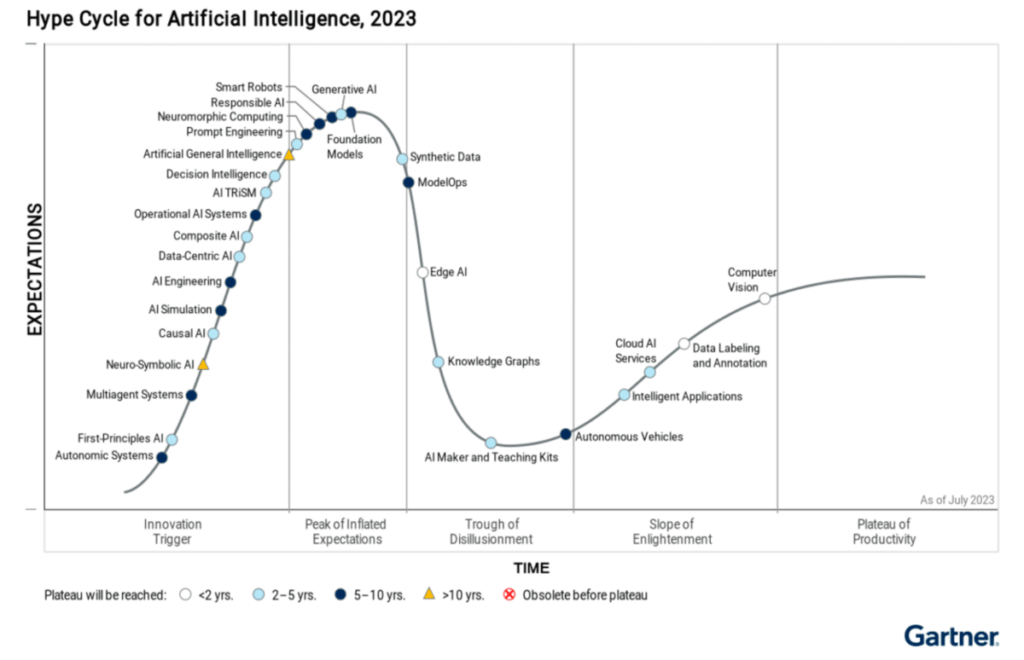
The movement to the Peak of Inflated Expectations suggests that there are heightened expectations and optimism around the capabilities and potential of generative AI. For the digital marketing and advertising industry, this could lead to increased investments and initiatives in exploring and implementing AI-driven solutions and innovations.
Following the peak in Gartner’s Hype Cycle usually comes the Trough of Disillusionment, where the technology fails to meet overly optimistic expectations. Companies in the digital marketing and advertising sector should be cautious and realistic in their AI endeavors to navigate potential disappointments and challenges effectively.
The positioning in the Hype Cycle underscores the need for strategic planning and thorough evaluation of generative AI applications. Companies should assess the feasibility, relevance, and value of AI technologies in alignment with their goals and capabilities to ensure sustainable and meaningful implementations.
8. Despite generative AI’s nascent public availability, experimentation with the tools is already relatively common.
The common experimentation with generative AI tools, despite their nascent availability, indicates a proactive and forward-looking approach by industries, including digital marketing and advertising. Early adoption and experimentation can provide a competitive advantage and enable companies to shape and leverage emerging AI trends and applications.
The expectation of transformational capabilities implies that generative AI is poised to bring significant changes and innovations to industries. For digital marketing and advertising, this can mean the evolution of strategies, processes, and interactions, necessitating adaptability and continuous learning.
Companies that actively experiment and integrate generative AI can position themselves as industry leaders and influencers. By driving AI-driven innovations and transformations, they can influence industry standards, practices, and developments, impacting the overall ecosystem.
9. The global AI in marketing market is expected to reach $82.70 billion by 2028, up from $11.73 billion in 2020.
Given generative AI’s capability to create diverse content forms, it can be a game-changer for the digital marketing and advertising industry. It allows for the development of innovative and varied content, enabling brands to engage their audience in new and compelling ways. This can lead to enhanced brand presence and consumer interaction, potentially increasing conversion rates and brand loyalty.
The ability of generative AI to autonomously generate content can significantly reduce the time and resources required for content creation. This can lead to improved operational efficiency and the ability to scale content production to meet market demands and opportunities, allowing companies to allocate human resources to more strategic and creative tasks.
Generative AI’s ability to create content can be leveraged for high-level customization and personalization in marketing strategies. By analyzing user data and preferences, generative AI can create tailored content that resonates more effectively with the target audience, enhancing user experience and relevance, which are crucial for customer retention and acquisition in the digital marketing landscape.
Final thoughts
The emergence of generative AI in the last year represents a watershed moment for marketing.
The stats and projections in this article underscore this technology’s tremendous disruptive potential. Its capabilities to enhance personalization, efficiency, and innovation present unmatched opportunities.
However, inflated expectations and hype warrant measured evaluations. The prudent path forward entails leveraging generative AI’s strengths while understanding its limitations. Its thoughtful application can elevate marketing to unprecedented heights. But blind adoption risks disillusionment.
The winners will be those who strategically experiment, assess use cases, and proactively realign their strategies.
Harnessing the transformational power of AI tools successfully demands knowledge, vision, and responsibility. The marketers who can critically evaluate, strategize, and innovate with generative AI will shape the future.
To stay ahead, the time is now to build the skills, perspectives, and structures to integrate this new capability with wisdom. The generative AI genie is out of the bottle, presenting monumental opportunities for those prepared to leverage it with care and creativity.
What did you think of this article? Share your feedback to help us improve.
Methods used to write this article
- Research performed with the assistance of ChatGPT, using ViaVOX and WebPilot plugins
- Charts/ Infographics created with Canva’s chart tool
- Outline and editing with GPT4

